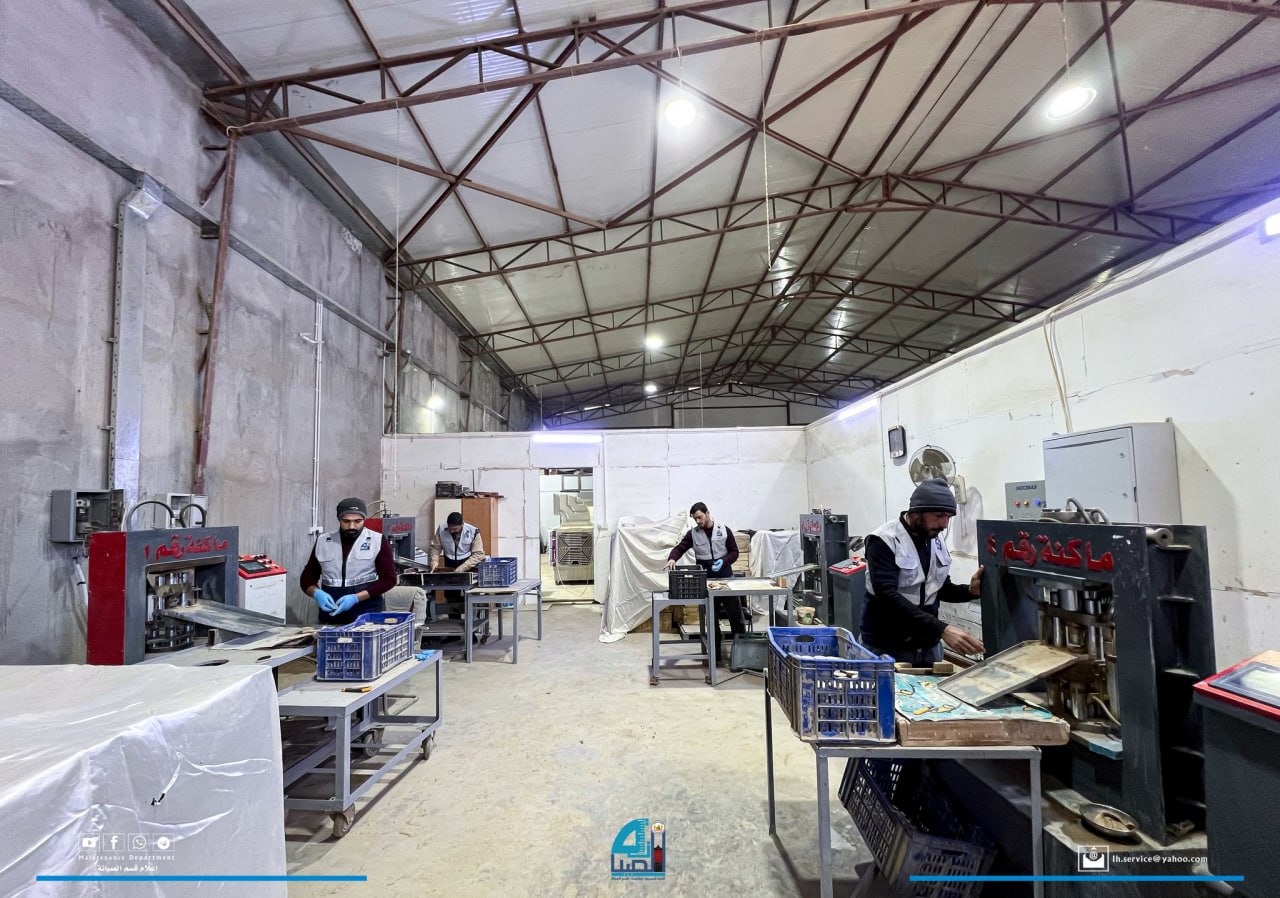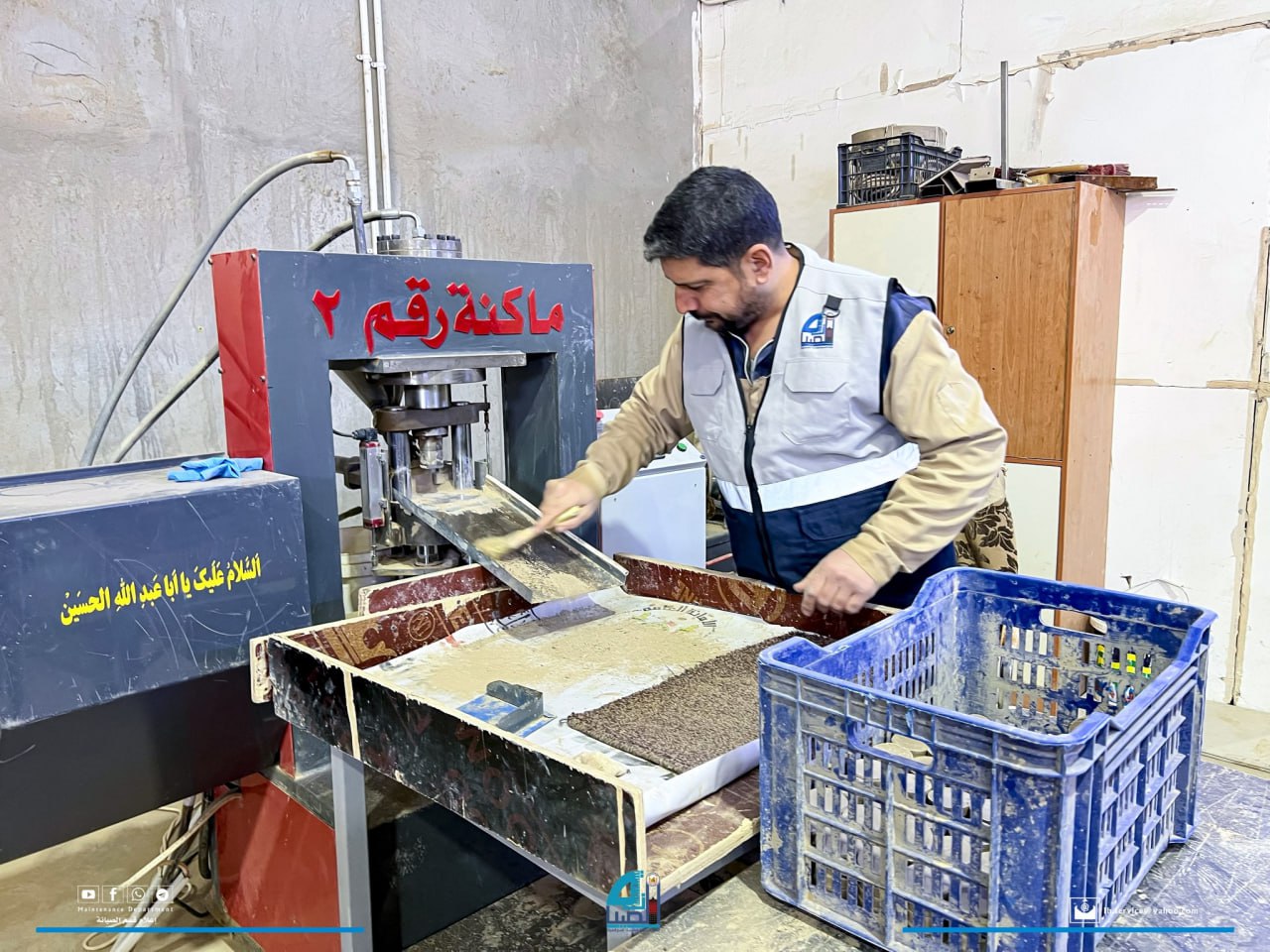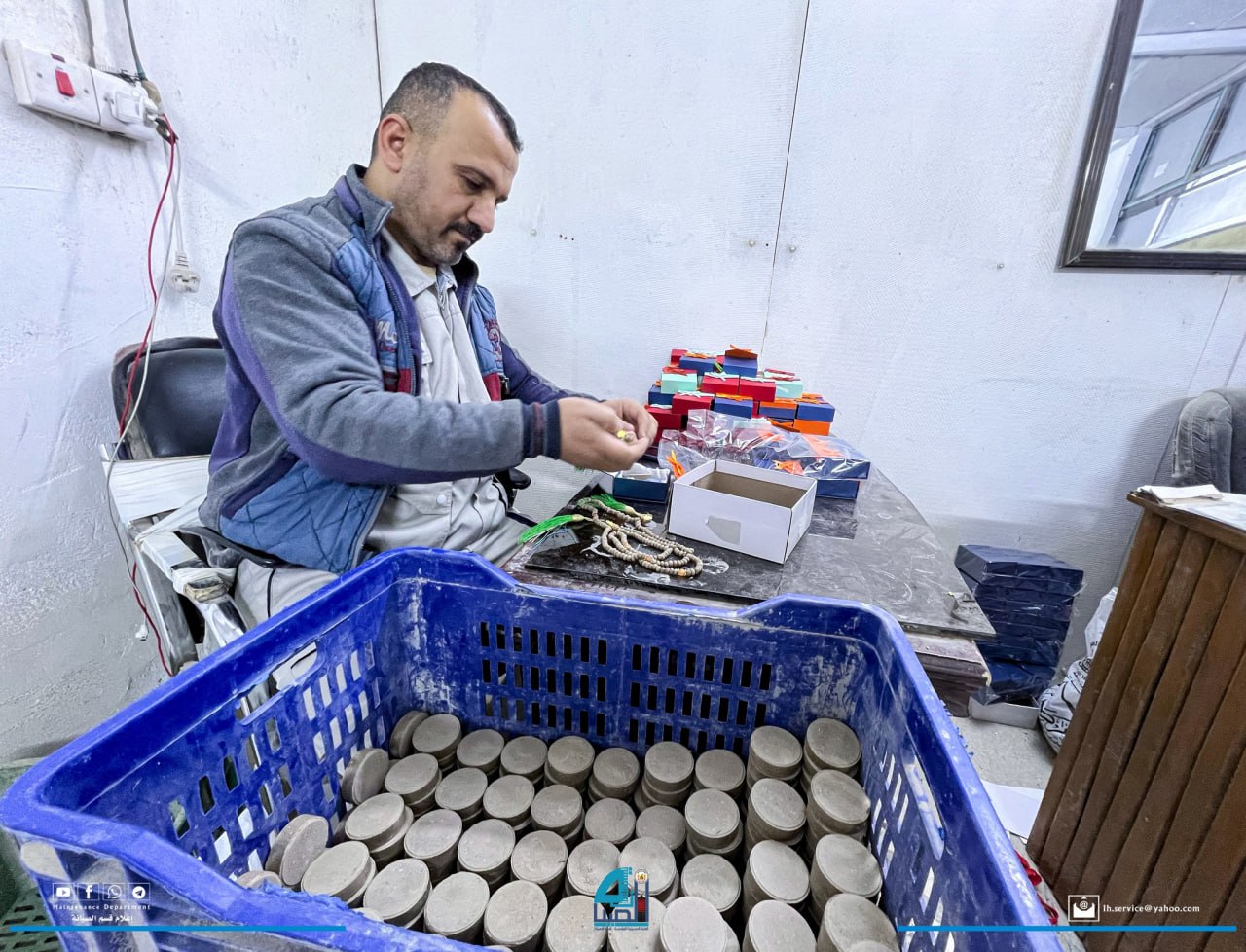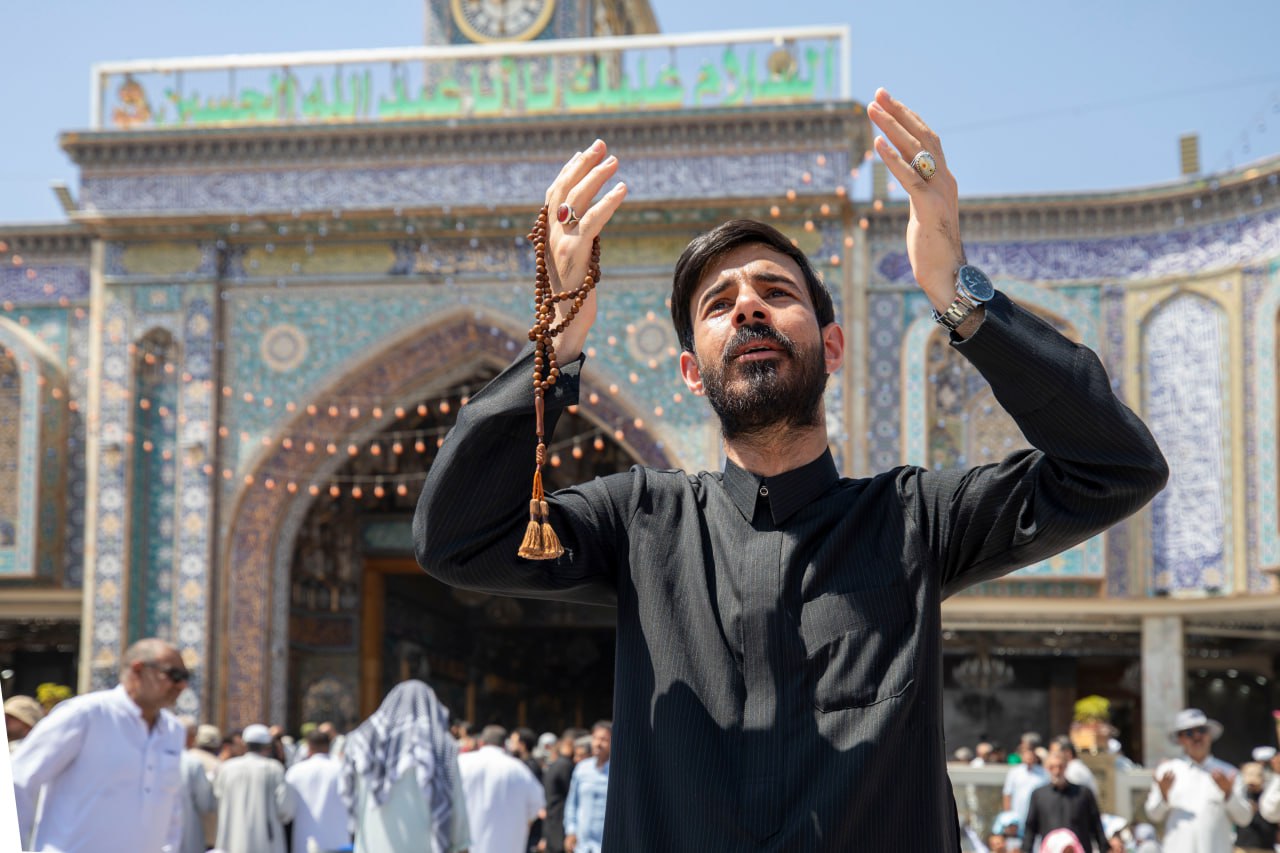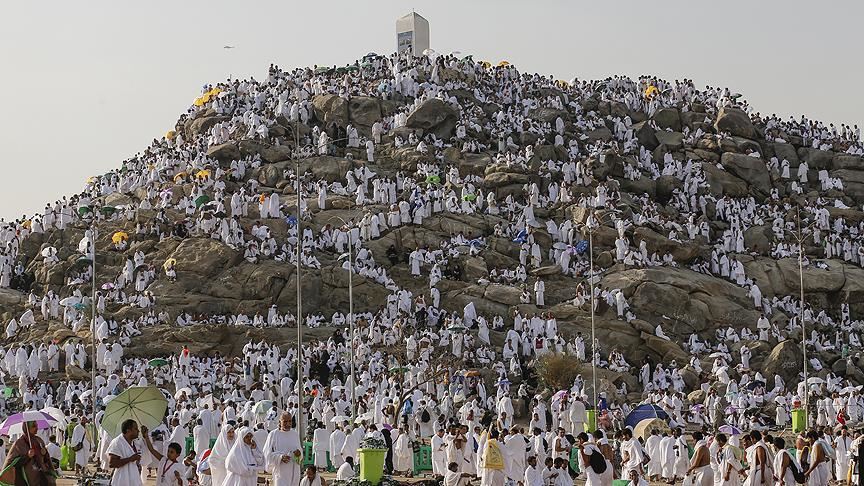The making of ‘Hussaini Turbah’ in Karbala: A religious heritage and skilled craft
The Hussaini turbah, the clay tablet on which Muslims prostrate during prayer, holds profound spiritual and historical significance. Made from soil taken from the ground of the Holy Shrine of Imam Hussain (peace be upon him), it is considered distinct from ordinary turbah due to its sacred origin. The Holy Shrine takes great care in its production, ensuring that each piece adheres to strict standards to preserve both its sanctity and quality. The Turbah Manufacturing Plant, part of the Holy Shrine’s Maintenance Department, plays a key role in this process with a skilled team dedicated to crafting these sacred items.
Engineer Abdul-Hassan Muhammad, head of the Maintenance Department, explained, “The production of the Hussaini turbah is a meticulous process aimed at creating high-quality soil that carries the blessings of Karbala.” He emphasized that this craft is not only a skill but also an integral part of religious and cultural heritage, symbolizing devotion and love for Imam Hussain (peace be upon him).
The process begins by extracting soil from within the Holy Shrine of Imam Hussain (peace be upon him), going as deep as five meters. This soil is carefully sorted to remove impurities and then mixed with Al-Alqami water from the Holy Shrine of Al-Abbas (peace be upon him), adding to its sanctity. The factory, established a decade ago, uses four modern machines to produce over 4,000 turbahs daily.
The plant continues to expand its services, distributing turbahs both inside and outside the Holy Shrine, ensuring that the religious and humanitarian mission of providing these sacred items reaches visitors from across Iraq and beyond.
Ebrahim Al-Owainy
